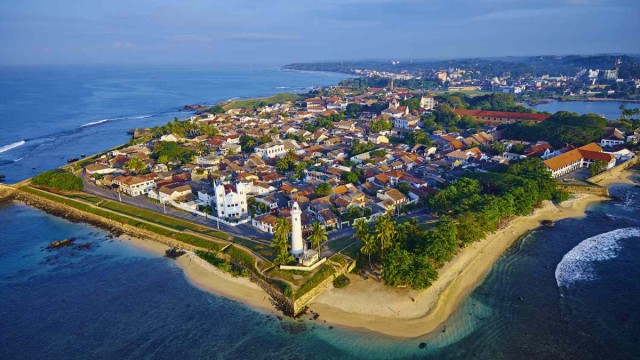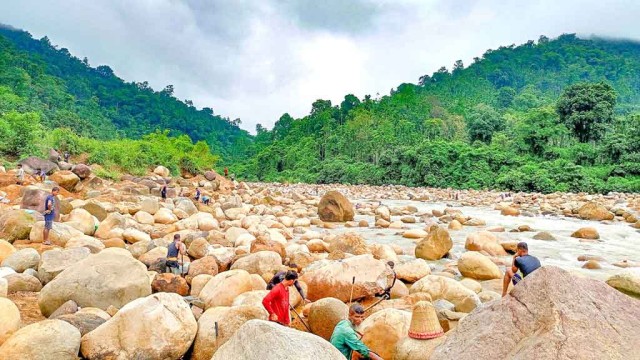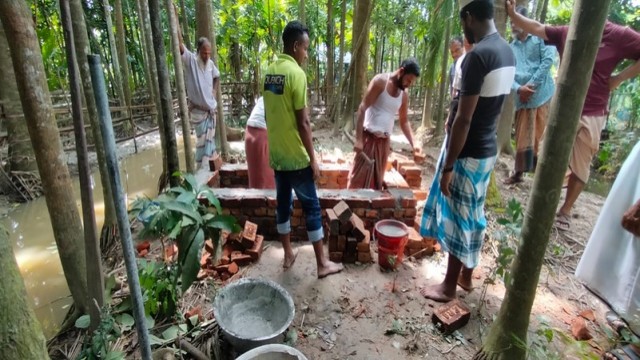Galle, June 23 (V7N) — Nestled on the southern shores of Sri Lanka, Galle is an enchanting island city where the vast Indian Ocean embraces both the land and its history. At the entrance of this serene town stands the iconic Dutch Fort, a timeless sentinel guarding the city’s stories.
What makes Galle truly remarkable is its pristine, orderly environment. Interestingly, traffic police are a rare sight here—not because of negligence, but because they are simply not needed. Drivers obey traffic signals, and during school hours, students themselves often guide traffic, ensuring smooth passage for their peers. Such harmony between people and city is uncommon elsewhere.
One of the crown jewels of Galle is the Galle International Cricket Stadium, hailed as one of the most picturesque cricket grounds in the world. With the deep blue sea on one side and the centuries-old fort on the other, it creates a mesmerizing blend of nature and sport.
For getting around, the easiest choice is the familiar tuk-tuk, often affectionately called "baby taxi" by Bangladeshis. However, the tuk-tuks of Galle are a bit different—most are brightly colored, and their drivers often double as friendly tour guides, ready to show visitors the hidden corners of their beloved city.
While the Galle Fort is undoubtedly the centerpiece, the area boasts numerous nearby beaches—Unawatuna, Jungle Beach, Mirissa, and Thalpe among them. These stretches of sand remain blissfully quiet, often deserted, especially at dawn or dusk. Standing on one of these beaches during sunrise or sunset feels like standing alone at the edge of the world, with the entire ocean whispering only to you.
At one edge of the fort stands Galle Lighthouse, the oldest lighthouse in the city. Originally constructed in 1848, it was rebuilt in 1939 after a devastating fire. Climbing its steps offers panoramic views—glittering waves, rocky shores, and the historic town unfolding beneath your feet. Here, history and nature share the same frame.
Within the fort, time itself seems to have paused. The remnants of a Dutch colony, dating back to the 17th century, still stand proud. Four- to five-hundred-year-old houses, modest from the outside, house cafes, art galleries, or small family-run shops. As you walk the cobblestone streets, you pass European-style homes with wooden shutters, centuries-old churches, hand-painted signboards, and mosques with rich architectural heritage. The All Saints Church from the British era sits quietly alongside the Mehria Mosque, reflecting Galle’s unique mosaic of civilizations.
Beyond its visual beauty, Galle is a model of civic discipline. Drivers stop without being told, and schoolchildren keep order during busy hours. This disciplined tranquility lends itself to Galle’s charm. Even at night, the city glows softly, the only sound being the gentle crash of waves. Crime and chaos feel like distant concepts here—you can walk freely at any hour.
During the tourist season, Galle bustles with life; in the off-season, it offers silence and solitude, perfect for introspective walks through narrow streets and along empty beaches.
Galle is more than a destination—it’s a feeling. Every corner tells a story: sometimes colonial echoes, sometimes the silent call of the sea. To truly discover Galle is not just to see it with your eyes but to feel it with your heart.
END/SMA/AJ































Comment: